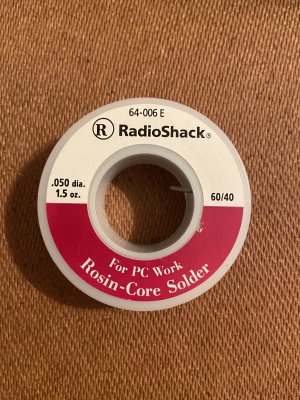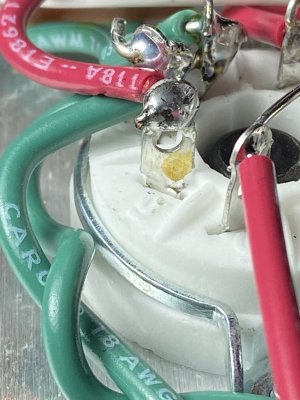Colonl_Charisma
New member
Hi Paul,
So I was able to use another GE 6080 tube in my amplifier. I did this to have a control in order to rule out either a bad tube or if there is something wrong with the amp that I assembled. The new 6080 tube that I put in was used and it also tested well on a tube tester so I knew beforehand there was nothing wrong with it. Upon powering the system on there was the same blue glow with a bright flash from the 6080 tube. I believe this rules out a bad tube, and I think I should direct my attention to the amp. Also, LEDs still turn on.
I went ahead and did my resistance and voltage checks again:
T1 = 3.65 M ohms, 77.2 V
T2 = 2.65 M ohms, 177.2 V
T3 = 0 ohms, 0 V
T4 = 2.15 M ohms, 177.4 V
T5 = 2.07 M ohms, 80.6 V
T6 = 0 ohms, 0 V
T7 = 2.92 K ohms, 102.9 V
T8 = 0 ohms, 0 V
T9 = 2.95 K ohms, 107.1 V
T10 = 0 ohms, 0 V
T12 = 0 ohms
T13 = 4.33 M ohms
T14 = 0 ohms
T20 = 0 ohms
T22 = 0 ohms
B3 = 2.98 K ohms
B6 = 2.98 K ohms
RCA Jacks
Center Pin L = 95.3 K ohms, R = 94.5 K ohms
Ground Tab L = 0 ohms, R = 0 ohms
Let me know what you think I should try. Thank you again for your help!
So I was able to use another GE 6080 tube in my amplifier. I did this to have a control in order to rule out either a bad tube or if there is something wrong with the amp that I assembled. The new 6080 tube that I put in was used and it also tested well on a tube tester so I knew beforehand there was nothing wrong with it. Upon powering the system on there was the same blue glow with a bright flash from the 6080 tube. I believe this rules out a bad tube, and I think I should direct my attention to the amp. Also, LEDs still turn on.
I went ahead and did my resistance and voltage checks again:
T1 = 3.65 M ohms, 77.2 V
T2 = 2.65 M ohms, 177.2 V
T3 = 0 ohms, 0 V
T4 = 2.15 M ohms, 177.4 V
T5 = 2.07 M ohms, 80.6 V
T6 = 0 ohms, 0 V
T7 = 2.92 K ohms, 102.9 V
T8 = 0 ohms, 0 V
T9 = 2.95 K ohms, 107.1 V
T10 = 0 ohms, 0 V
T12 = 0 ohms
T13 = 4.33 M ohms
T14 = 0 ohms
T20 = 0 ohms
T22 = 0 ohms
B3 = 2.98 K ohms
B6 = 2.98 K ohms
RCA Jacks
Center Pin L = 95.3 K ohms, R = 94.5 K ohms
Ground Tab L = 0 ohms, R = 0 ohms
Let me know what you think I should try. Thank you again for your help!


